-
Use Cases
-
Resources
-
Pricing
Fall of the Berlin Wall Timeline
(1961 - 1989)Protests and Resistance
Peaceful protests against the Berlin Wall
Jun 17, 1953
% complete
Peaceful protests against the Berlin Wall took place on June 17, 1953. Thousands of East German workers and citizens demonstrated against the government's increase in work quotas and the lack of political freedom. The protests spread throughout East Germany and were eventually suppressed by Soviet tanks and military forces. This event marked an early expression of dissent against the Berlin Wall and the oppressive regime in East Germany.
Image source: Fall of the Berlin Wall
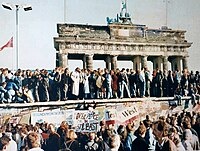
Peter Fechter shot while trying to cross the wall
Aug 17, 1962
% complete
Peter Fechter, a 18-year-old bricklayer, was shot while attempting to escape to West Berlin. He was shot by East German guards and left to bleed to death. His cries for help went unanswered for over an hour, as both East German and West German guards refused to intervene. This tragic incident highlighted the brutality and danger of trying to cross the Berlin Wall.
Image source: Killing of Peter Fechter

Ronald Reagan's "Tear down this wall" speech
Jun 12, 1987
% complete
Ronald Reagan delivered his famous "Tear down this wall" speech on June 12, 1987, at the Brandenburg Gate in Berlin. In his speech, Reagan called on Soviet leader Mikhail Gorbachev to take down the Berlin Wall, symbolizing the end of the division between East and West Germany. Reagan's powerful words became an iconic moment in the Cold War and a significant milestone in the eventual fall of the Berlin Wall.
Image source: Tear down this wall!
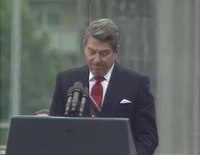
Construction and Division
Construction of the Berlin Wall begins
Aug 13, 1961
% complete
Construction of the Berlin Wall begins on August 13, 1961. The East German government starts building a wall to divide East and West Berlin in order to prevent East Germans from escaping to the West.
Image source: Berlin Wall
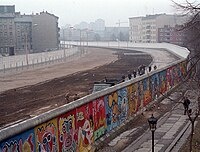
Checkpoint Charlie established
Oct 22, 1961
% complete
Checkpoint Charlie was a famous border crossing point between East and West Berlin during the Cold War. It was established on October 22, 1961, following the construction of the Berlin Wall. The checkpoint was named after the letter 'C' in the NATO phonetic alphabet, and it became one of the most renowned symbols of the Cold War. Checkpoint Charlie was the only crossing point where Allied personnel were authorized to enter East Berlin, and it also served as a site for intense standoffs and diplomatic negotiations between the United States and the Soviet Union.
Image source: Checkpoint Charlie Museum
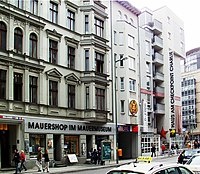
Political Developments
Hungary opens its borders with Austria
Aug 23, 1989
% complete
Hungary opens its borders with Austria on August 23, 1989. This event marked a significant turning point in the fall of the Berlin Wall as it allowed thousands of East Germans to flee to the West. The Hungarian government made the decision to open the borders due to increasing pressure from both East German and Hungarian citizens who were demanding more freedom. The opening of the Hungary-Austria border gave hope to East Germans that they too could escape to the West, leading to further calls for change and ultimately contributing to the collapse of the Berlin Wall.
Erich Honecker resigns as leader of East Germany
Oct 18, 1989
% complete
Fall of the Wall
Berlin Wall gates opened temporarily
Nov 9, 1989
% complete
On November 9, 1989, the Berlin Wall gates were opened temporarily. This event marked a significant turning point in the history of the Cold War and the reunification of Germany. Thousands of East Germans flooded into West Berlin, eager to experience the newfound freedom of movement and reunite with family and friends. The opening of the gates symbolized a shift in the political landscape and ultimately led to the eventual dismantling of the Berlin Wall.
Berlin Wall breached at the Brandenburg Gate
Nov 9, 1989
% complete
On November 9, 1989, the Berlin Wall was breached at the Brandenburg Gate, marking a significant moment in the history of the wall's fall. This event symbolized the end of the separation between East and West Berlin and the reunification of Germany. Thousands of East Berliners gathered at the Brandenburg Gate and began climbing over the wall or using tools to break through. The border guards, initially overwhelmed by the sheer number of people, eventually allowed the crossings. This event sparked celebrations and joyous scenes as people from both sides of the wall embraced and celebrated the newfound freedom.
Image source: Brandenburg Gate
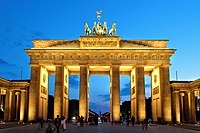
Demolition of the Berlin Wall begins
Nov 10, 1989
% complete
On November 10, 1989, the demolition of the Berlin Wall begins. After years of separation between East Berlin and West Berlin, people from both sides start tearing down the wall, symbolizing the reunification of Germany. Crowds gather at the wall, equipped with hammers, chisels, and other tools to chip away at the concrete barrier. The event is filled with emotions of joy, relief, and hope for a new era of unity and freedom. The demolition continues for months, with people on both sides actively participating in dismantling the wall.
Reunification
Germany officially reunified
Oct 3, 1990
% complete
Germany officially reunified on October 3, 1990. This event marked the end of the division of Germany into East and West and the establishment of a single, unified German state. It followed the fall of the Berlin Wall in 1989, which opened the way for the reunification process.
Image source: German reunification

Key Facts
- On August 13, 1961, the Berlin Wall was constructed by the East German government to prevent East Berliners from fleeing to West Berlin.
- The Berlin Wall was 96 miles long and consisted of concrete walls, barbed wire fences, and guard towers.
- Over 5,000 East Germans managed to escape to West Berlin between 1961 and 1989.
- On November 9, 1989, the East German government announced that all citizens could travel to West Germany.
- The dismantling of the Berlin Wall began on November 9, 1989, and it officially fell on November 9, 1990.
Source
This Fall of the Berlin Wall timeline was generated with the help of AI using information found on the internet.
We strive to make these timelines as accurate as possible, but occasionally inaccurates slip in. If you notice anything amiss, let us know at [email protected] and we'll correct it for future visitors.
Create a timeline like this one for free
Preceden lets you create stunning timelines using AI or manually.
Customize your timeline with one of our low-cost paid plans
Export your timeline, add your own events, edit or remove AI-generated events, and much more
Free
$
0
free forever
No credit card required.
Basic
$
10
/month
billed annually
Cancel anytime.
Pro
$
16
/month
billed annually
Cancel anytime.
Common Questions
Can I cancel anytime?
Yes. You can cancel your subscription from your account page at anytime which will ensure you are not charged again. If you cancel you can still access your subscription for the full time period you paid for.
Will you send an annual renewal reminder?
Yes, we will email you a reminder prior to the annual renewal and will also email you a receipt.
Do you offer refunds?
Yes. You can email us within 15 days of any payment and we will issue you a full refund.
What if I have more questions?
Check out our pricing docs or send us an email anytime: [email protected].
